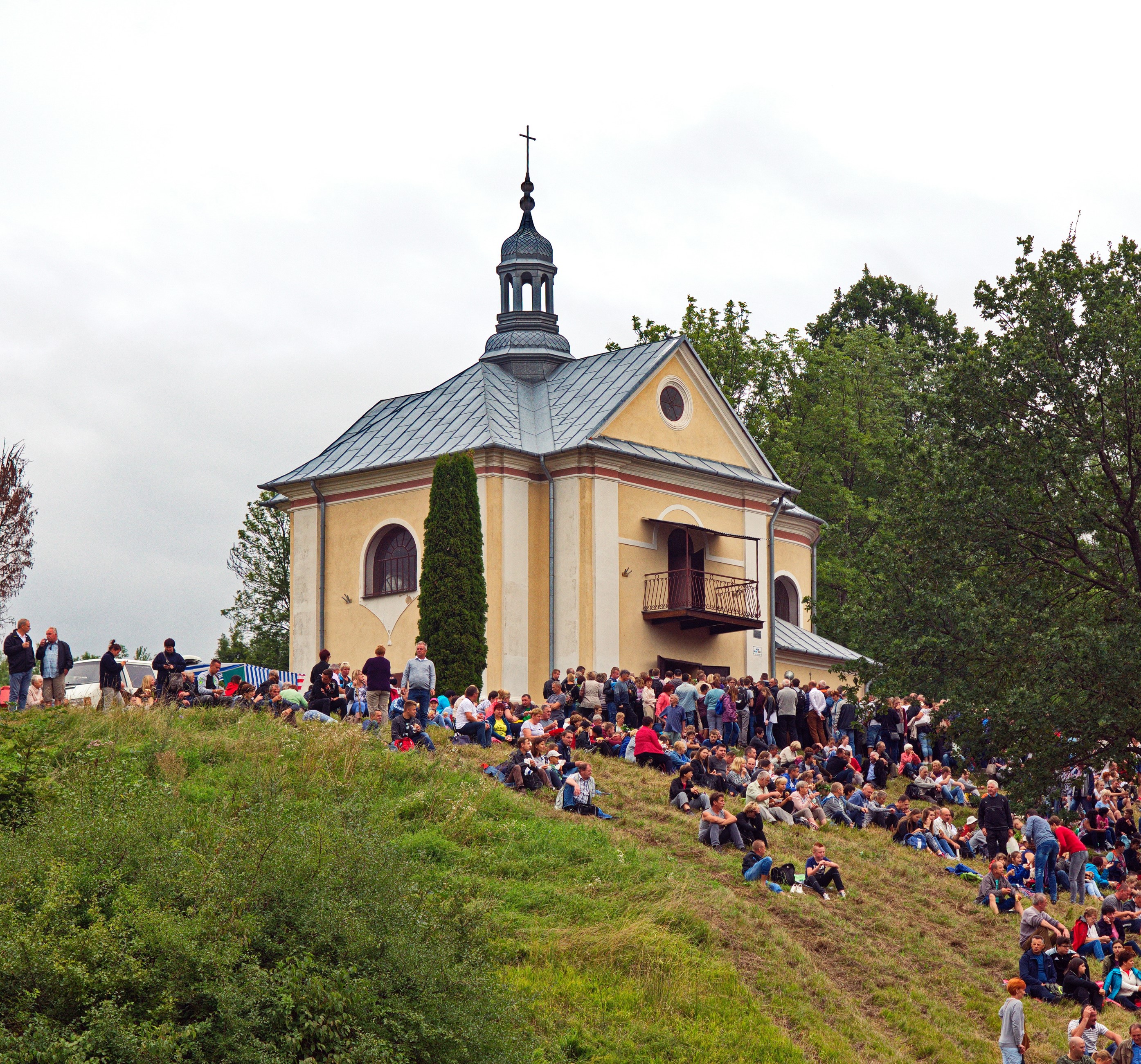Babiński G. 2010. Refleksje nad kierunkami przemian pogranicza polsko-ukraińskiego. In M. Zowczak (ed.), Na pograniczu „nowej Europy”. Polsko-ukraińskie sąsiedztwo. Warszawa, 31–44.
Baraniecka K. 2008. Communitas a intencje pątników – typy uczestnictwa w pielgrzymce. Wielki Odpust Kalwaryjski Wniebowzięcia Najświętszej Maryi Panny w Kalwarii Pacławskiej. Etnografia Polska 52 (1–2), 137–154.
Baraniecka-Olszewska K. 2016. O Wielkim Odpuście w Kalwarii Pacławskiej ponownie. Refleksja nad antropologią pielgrzymek. Etnografia Polska 60 (1–2), 27–42.
Baraniecka-Olszewska K. 2018a. Praktyki pamięci. Inscenizacja rzezi wołyńskiej jako przedmiot sporu o pamięć. In Z. Bogumił and A. Szpociński (eds.), Stare i nowe tendencje w obszarze pamięci społecznej. Warszawa, 179–195.
Baraniecka-Olszewska K. 2018b. Natura Sanat: On Ecological Aspects of Healing Miracles in Kalwaria Pacławska, Poland. Journal of Global Catholicism 2 (2), 26–54.
Bogumił Z. 2016. Pamięć o konfliktach i dialogach Polaków z sąsiadami zapisana w kulturowym krajobrazie stolicy. W J. Kurczewska (ed.), Przemiany kulturowe we współczesnej Polsce. Ramy, właściwości, epizody. Warszawa, 402–426.
Bowman G. 1993, Nationalizing the Sacred, Shrines and Shifting Identities in the Israeli-Occupied Territories. Man 28 (3) 431–460.
Buyskykh I. 2016a. Pomiędzy pamięcią a granicą, ukraińska pielgrzymka na Kalwarię Pacławską. Etnografia Polska 60 (1–2), 43–62.
Buyskykh I. 2016b. An Ukrainian Scholar in Poland, Notes in the Margins. Lud 100, 151–160.
Buyskykh I. 2018a. Forgive, Forget or Feign, “Everyday Diplomacy” in Local Communities of Polish Subcarpathia. Journal of Global Catholicism 2 (2), 56–86.
Buyskykh I. 2018b. In Pursuit of Healing and Memories, Cross-Border Ukrainian Pilgrimage to Polish Shrine. in print.
Buzalka J. 2007. Nation and Religion, The Politics of Commemorations in South-East Poland. Berlin.
Csordas T. J. 1990. Embodiment as a Paradigm for Anthropology. Ethos 18 (1), 5–47.
Eade J. and Sallnow M. J. 1991. Introduction. In J. Eade and M. J. Sallnow (eds.), Contesting the Sacred. The Anthropology of Christian Pilgrimage. London, 1–29.
Hann C h. 1996. Ethnic Cleansing in Eastern Europe, Poles and Ukrainians beside the Curzon Line. Nations and Nationalisms 3 (3), 389–406.
Hann C h. 1998a. Postsocialist Nationalism, Rediscovering the Past in Southeast Poland. Slavic Review 57 (4), 840–863.
Hann C h. 1998b. Religion, Trade and Trust in South-East Poland. Religion, State and Society. The Keston Journal 26 (3–4), 235–249.
Hastrup K. 1995. A Passage to Anthropology. Between Experience and Theory. London–New York.
Hayden R. M. 2002. Antagonistic Tolerance, Competitive Sharing of Religious Sites in South Asia and the Balkans. Current Anthropology 43 (2), 205–231.
Howe L. 2000. Risk, Ritual, Performance. The Journal of the Royal Anthropological Institute 6 (1), 63–79.
Ksenicz I. 2013. Konflikt polsko-ukraiński 1943–1947 w polskiej historiografii i debacie politycznej. Refleksje 7, 41–56.
Lubańska M. 2016. Muslims and Christians in the Bulgarian Rhodopes. Studies on Religious (Anti)Syncrerism. Berlin.
Meyer B. 2006. Religious Sensations. Why Media, Aesthetics and Power Matter in the Study of Contemporary Religion. http://www.fsw.vu.nl/nl/Images/Oratietekst_Birgit_Meyer_tcm249-36764.pdf, access: 02.02.2016.
Meyer B. 2011. Mediation and Immediacy, Sensational Forms, Semiotic Ideologies and the Question of the Medium. Social Anthropology 19 (1), 23–39.
Motyka G. 2011. Od rzezi wołyńskiej do akcji „Wisła”. Konflikt polsko-ukraiński 1943–1947. Kraków.
Motyka G. 2016. Wołyń ’43. Kraków.
Niedźwiedź A. 2014. Competing Sacred Places, Making and Remaking of National Shrines in Contemporary Poland. In J. Eade and M. Katić (eds.), Pilgrimage, Politics and Place-Making in Eastern Europe. Crossing the Borders. Fahrnam–Burlington, 79–99.
Pasieka A. 2015. Hierarchy and Pluralism, Living Religious Difference in Catholic Poland. New York.
Pasieka A. 2016. Reenacting Ethnic Cleansing: People’s History and Elitist Nationalism in Contemporary Poland. Nations and Nationalism 22 (1), 63–83.
Portnov A. 2012. Pamięć o drugiej wojnie światowej i jej nurty we współczesnej Ukrainie. Pamięć i Sprawiedliwość 19, 467–476.
Portnov A. 2016. Clash of Victimhoods, the Volhynia Massacre in Polish and Ukrainian Memory.
https://www.opendemocracy.net/od-russia/andrii-portnov/clash-of-victimhood-1943-volhynian-massacre-in-polish-and-ukrainian-culture, access: 5.03.2017.
Schieffelin E. 1996. On Failure and Performance, Throwing the Medium out of The Séance. In C. Laderman and M. Roseman (eds.), The Performance of Healing. London–New York, 59–89.
Sekerdej K. and Pasieka A. 2013. Researching the Dominant Religion, Anthropology at Home and Methodological Catholicism. Method & Theory in the Study of Religion 25 (1), 53–77.
Snyder T. 2016. Wołyń 1943. Ukraińsko-polskie czystki etniczne. Warszawa.
Zowczak M. 2011. Antropologia, historia a sprawa ukraińska. O taktyce pogranicza. Lud 95, 45–66.
Google Scholar
